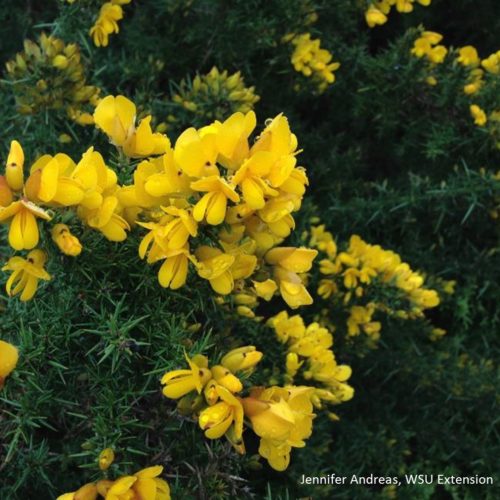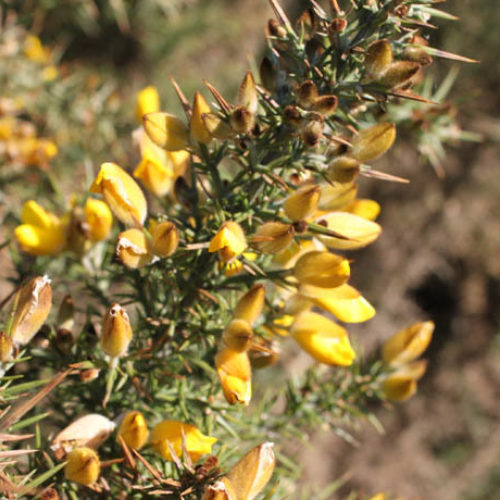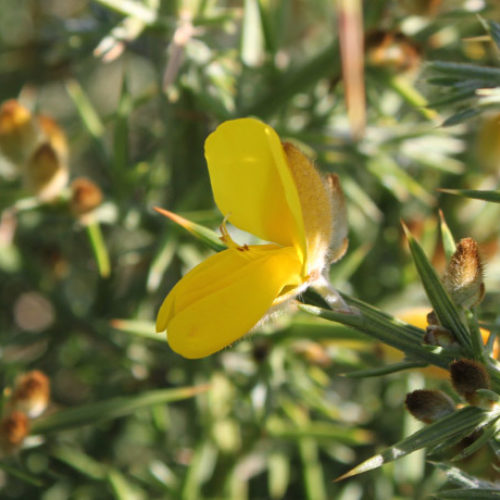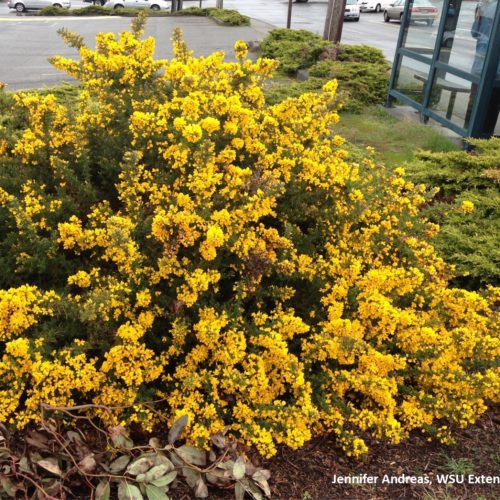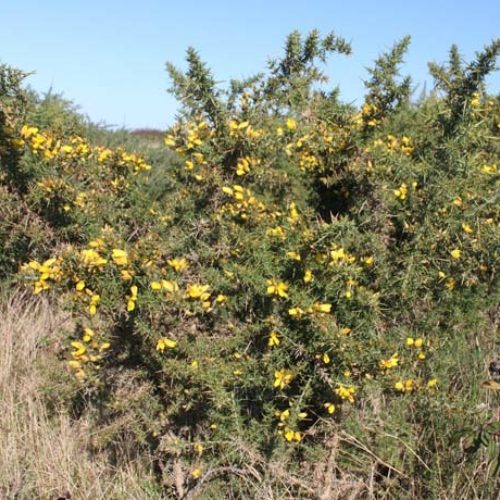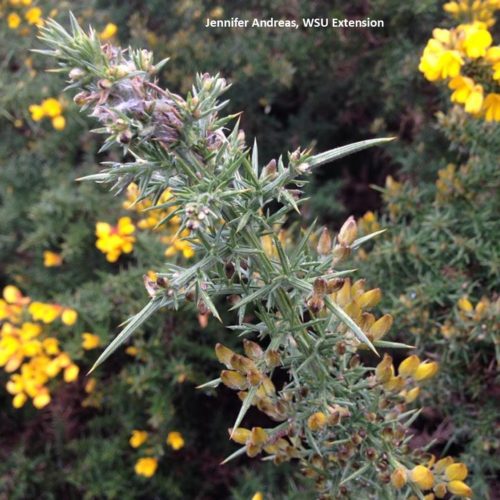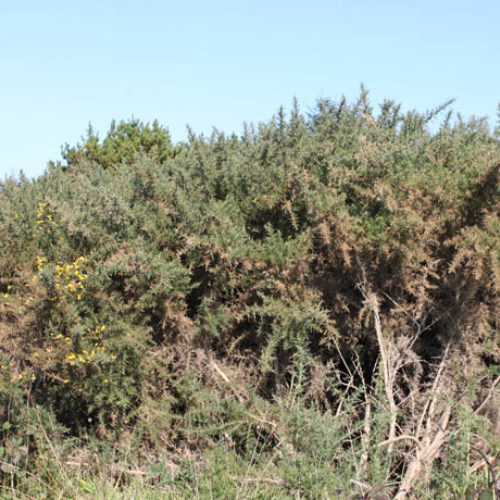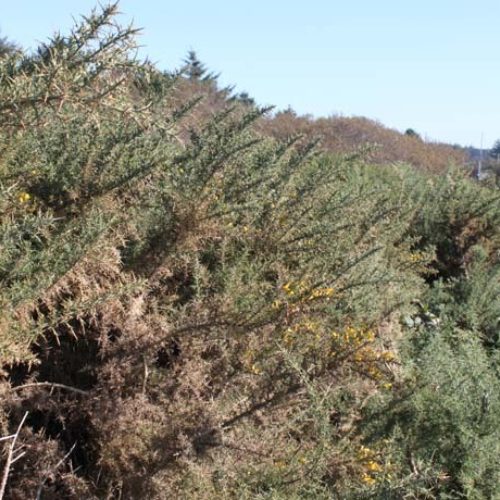Gorse
Ulex europaeus
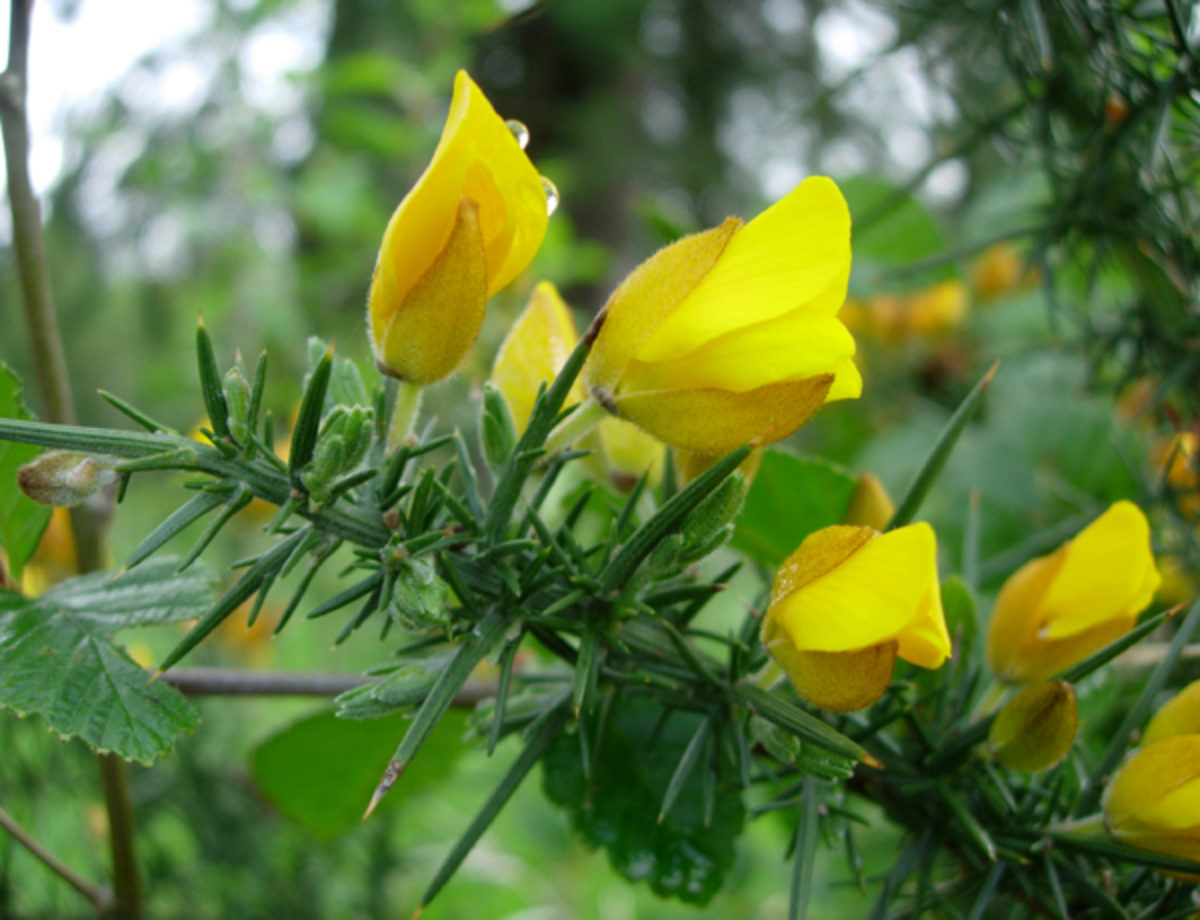
Family: Fabaceae
Other Common Names: European gorse
Weed class: B
Year Listed: 1988
Native to: Europe
Is this Weed Toxic?:
not known to be
Legal listings:
This plant is also on the Washington State quarantine list. It is prohibited to transport, buy, sell, offer for sale, or distribute plants or plant parts of quarantined species into or within the state of Washington or to sell, offer for sale, or distribute seed packets of seed, flower seed blends, or wildflower mixes of quarantined species into or within the state of Washington. Please see WAC 16-752 for more information on the quarantine list. For questions about the quarantine list, contact the Washington State Department of Agriculture's Plant Services Program at (360) 902-1874 or email PlantServices@agr.wa.gov.
Why Is It a Noxious Weed?
Gorse forms vigorous stands that grow outward and crowd out all other vegetation causing a considerable loss of grassland habitat. Because it forms a center of dry dead vegetation and has a high oil content, it is a serious fire hazard.
How would I identify it?
General Description
Gorse is a perennial, evergreen shrub able to grow over 10 feet tall. It is shrubby with stout and upright spreading branches with angular stems and a terminal thorn. The plant habit is dense, sometimes 30 feet in diameter, with a center of dead foliage.
Flower Description
Flowers are shiny yellow and pea-like. They are 1/2 to 3/4 inch long and clustered near ends of branches.
Leaf description
Leaves are trifoliate—having 3 thin leaflets. As they mature they become spiny. Spines are also in the leaf axils.
Stem description
Stems are stiff and angular with branches maturing from green to brown.
Fruit Seed Description
The seed pods are hairy, ½ to ¾ inch long, and brown when ripe. The pods burst and scatter seeds for several feet. The seeds are smooth and shiny, olive to brownish.
May Be Confused With
It may be mistaken for Scotch broom (Cytisus scoparius), a Class B noxious weed or Spanish broom (Spartium junceum), a Class A noxious weed. The obvious spikes distinguish gorse from these other species. For help with identification, contact your county noxious weed coordinator.
Where does it grow?
Gorse can be found in open areas, roadside, riparian areas and grasslands. Please click here to see a county level distribution map of gorse in Washington.
How Does it Reproduce?
Gorse reproduces primarily by seed, but it can also spread vegetatively. Its seeds can remain viable in the soil for over 30 years.
How Do I Control It?
General Control Strategy
Gorse control should be done in two stages. The first stage is to get control of established plants. The second stage is to control new plants from the existing seed bank. The most effective control program usually includes a combination of herbicides and cultivation or mowing.
Mechanical Control
Hand pulling or digging may be an option for small infestations, but the entire plant must be removed since gorse can re-sprout. Chopping, cutting or mowing is an option for flat areas. Repeated mowing may be necessary to deplete root reserves.
Cultural Control
Cultivation and establishing competitive pasture species, forest trees, or other crops help resist gorse invasions as well as other weeds.
Biological Control
Goats are a cost effective control method for gorse seedlings. Chickens eat gorse seeds, and through the digestion process the seeds are destroyed.
Herbicide Control
Please refer to the PNW Weed Management Handbook, or contact your county noxious weed coordinator.
For More Information
See our Written Findings for more information about gorse (Ulex europaeus).
Report on gorse from the book "Weed Control in Natural Areas in the Western United States"
Publication: Biology and Biological Control of Common Gorse and Scotch Broom
Thurston County NWCB Fact Sheet on gorse
King County NWCB Fact Sheet on gorse
Jefferson County NWCB Fact Sheet on gorse
Pierce County NWCB Fact Sheet on gorse
Control Options for gorse from King County NWCB



